April 2025
Remember that scene in Notting Hill when Bernie doesn’t recognise Anna Scott and he talks to her about how terrible acting is and how hard-up she must be?
It was a bit like that when I went to Jaleo, the first restaurant opened by Jose Andres. Of course I’d heard of the famous restauranteur. He owns several buzzy restaurants in Washington DC and elsewhere in the US.
I was particularly delighted to be eating at his Spanish restaurant, given that he grew up in Spain and I’d eaten my way through Madrid (twice).
I didn’t know Jaleo was opened in 1993, and is credited with popularising tapas in America. I’m ashamed to say I didn’t know that Chef Andres is a total mensch.
Since 2010, his non-profit has served 450 million meals to people in urgent need.
In 2010, Andres visited Haiti to help people in the aftermath of the country’s devastating earthquake. While there, he developed the model for World Central Kitchen (WCF).
The model was this: to provide nourishing meals after a disaster, while simultaneously supporting local economies to kickstart recovery.
In just a decade and a half, WCF has served 450 million meals in hundreds of locations worldwide to families affected by conflict, natural disasters, and the climate crisis.
Last year alone, WCK made 109 million meals in places like Ukraine and Gaza.

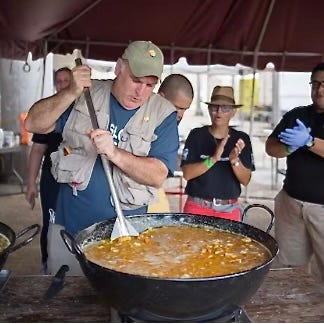
I only found this out after I’d eaten, so I wasn’t prejudiced in favour of Jaleo’s food.
In fact, I wasn’t impressed when the first dish arrived: a juice glass of smooth gazpacho, coloured beet red, not tomato red. It was small, it was unadorned and it was the wrong colour.
It was absolutely delicious. It reminded me of the meal pill that Veruca Salt swallows in Charlie and the Chocolate Factory.
My gazpacho might have been small, but I could taste the roasted beetroot, the sun-warmed tomatoes, the crisp peppers and the mellow red onion. The depth of flavour from the beets, and the fact that the soup was seasoned perfectly, elevated this humble glass of gazpacho from tasting like Mediterranean summer to tasting like something globally cheffy.
My favourite part of the meal arrived next: Jose Andres’ patatas bravas.
Small chunks of roast potato on a red pepper sauce is probably the most famous tapas dish in Spain. It’s very simple, but very easy to get wrong. The potato chunks must be bite-size – not too big or too small – and slightly salty, but not heavily salted. They should be crisp on the outside, tender within. The sauce – the salsa brava – should be mellow and warming, with paprika for earthy heat. Patatas bravas sauce isn’t made with tomato. There’s none of that wetness or acidity.
I love Jose Andres for messing with perfection. His sauce did contain tomato.
Not only that, the perfect roast potato chunks were interspersed with heavenly, homemade aioli, and there was extra smoked paprika sprinkled on top.
Crispy chips with handmade, rich, silky garlicky mayonnaise? Heavenly. Patatas bravas with Jose Andres aioli and extra paprika?
Come on. Just come ON.
I thought I might throw my hands up and leave after that dish.
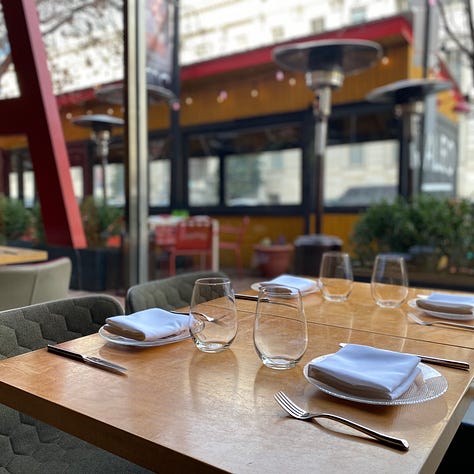
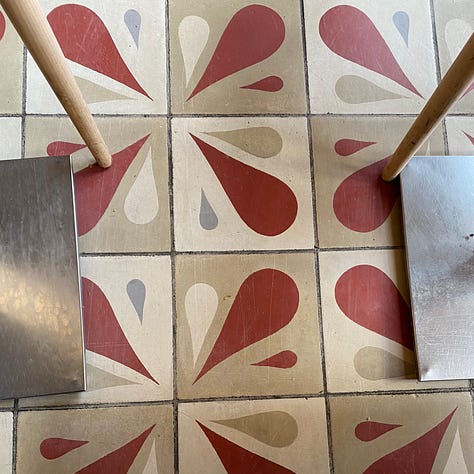
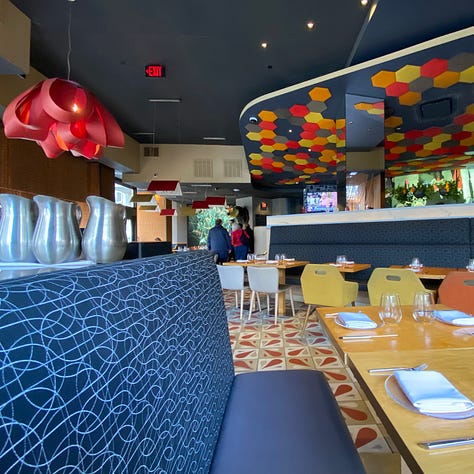

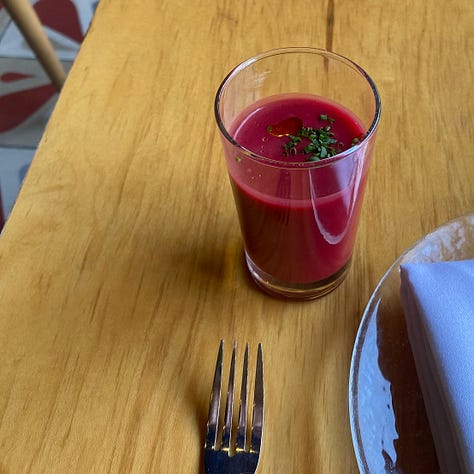
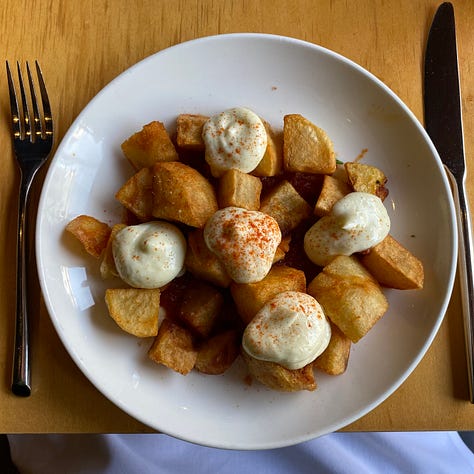
But no. I had to have the hot shrimp in oil and garlic. This is one of the most famous dishes on Jaleo’s menu, and I’d had the original in Madrid.
The story goes that gambas al ajillo was invented by La Casa del Abuelo in central Madrid. I ate it there, at an outside table at sunset, and it was spectacular.
Jaleo’s gambas al ajillo might be a little herbier than the dish at La Casa del Abuelo. Jaleo uses a cast iron dish instead of a terracotta one. But Jaleo’s shrimps are as fresh and as plump; the garlic is as plentiful; the whole red chilli is just as necessary (to break the richness of the dish) and the plain white bread served alongide is just as necessary (for mopping up garlicky oil once the shrimp are gone).
I don’t usually eat shrimp, prawns, langoustines or lobster. They’re generally not sustainably fished or farmed. But given the fame of this dish, and my personal connection with it, I made an exception. It was utterly delicious.
Andres is a genius with savoury tastes and also, as it turns out, a genius with sweet.
I recently returned to Jaleo. (It’s the type of place that pops into your mind often.) A huge highlight was the spinach with apple, apricot and pine nuts.
Isn’t that exactly the kind of thing you wouldn’t order? I’m happy to eat spinach at home, but do I want it with fruit? Not really. The only things that go with spinach are garlic, cream and feta - mushrooms at a push. Right?
Incorrect. This spinach was served over a praline of pine nuts and olive oil. It was sweet, rich and sticky. The apricot and apple was cut into tiny pieces. It made the baby spinach taste even younger and fresher. The pine nuts delivered depth. The impeccable seasoning and the natural bitterness of the spinach balanced out the sweetness and the fat.
And it was so beautiful! This was truly an emerald green dish, as vibrant and shiny as a jewel. The orange and gold tones of the apple, pine nuts and praline brought to mind the decorative features of a Persian palace. I like being reminded of a country’s history when I eat its food. This dish could not be mistaken for an Italian or French dish. The history of Muslim settlement in Spain is right there on the plate.
I love brinjal. The fried aubergine slices with honey were what they should have been: soft, rich vegetal centres with a homemade crunchy crust and a hit of honey. I’m sure this dish is a crowd-pleaser and these chips would go brilliantly with a strong, cold, alcoholic drink.
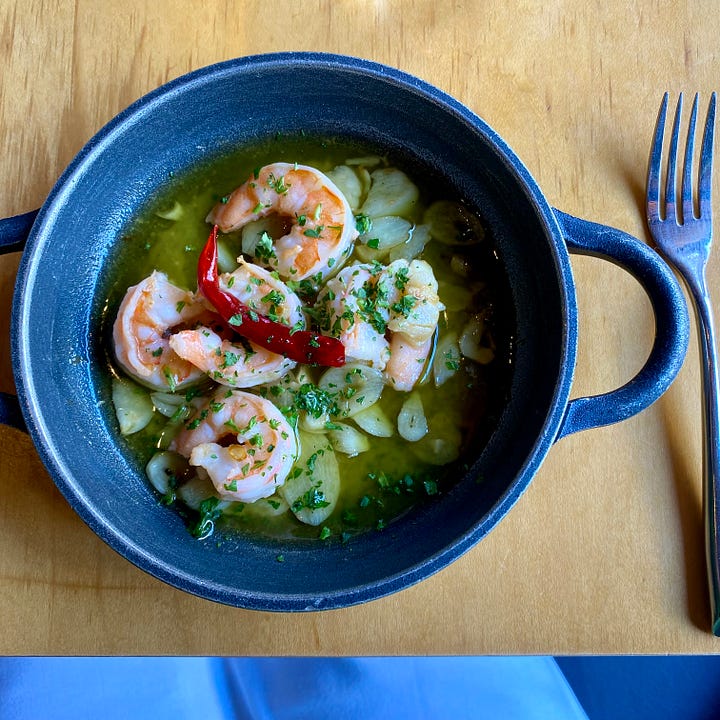
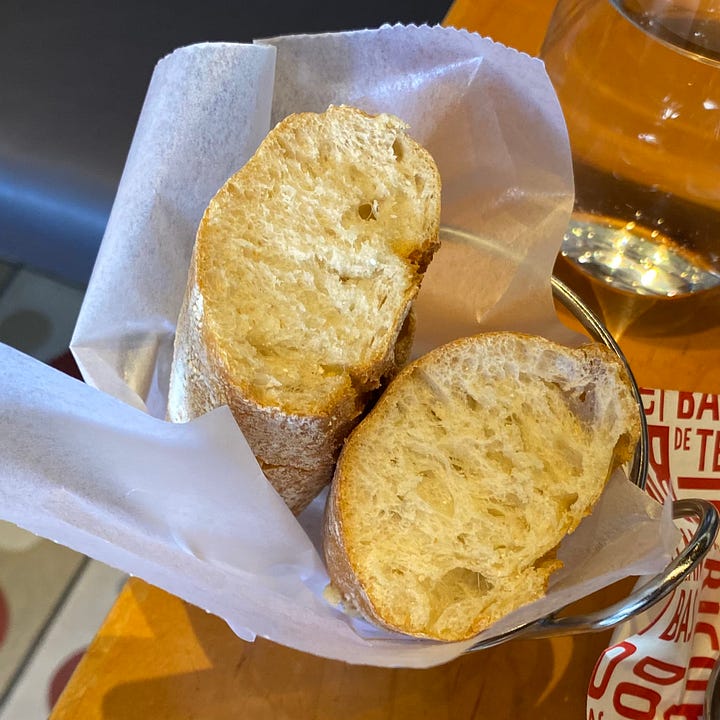
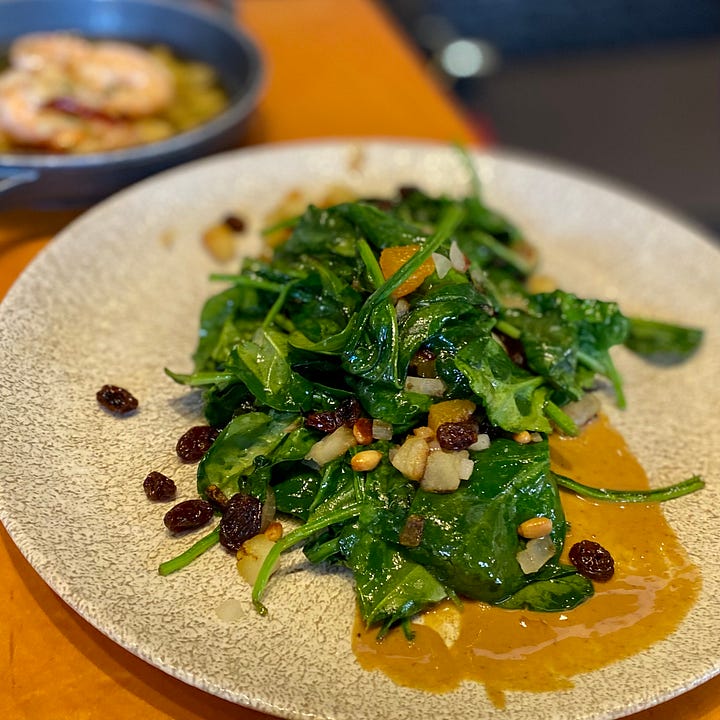
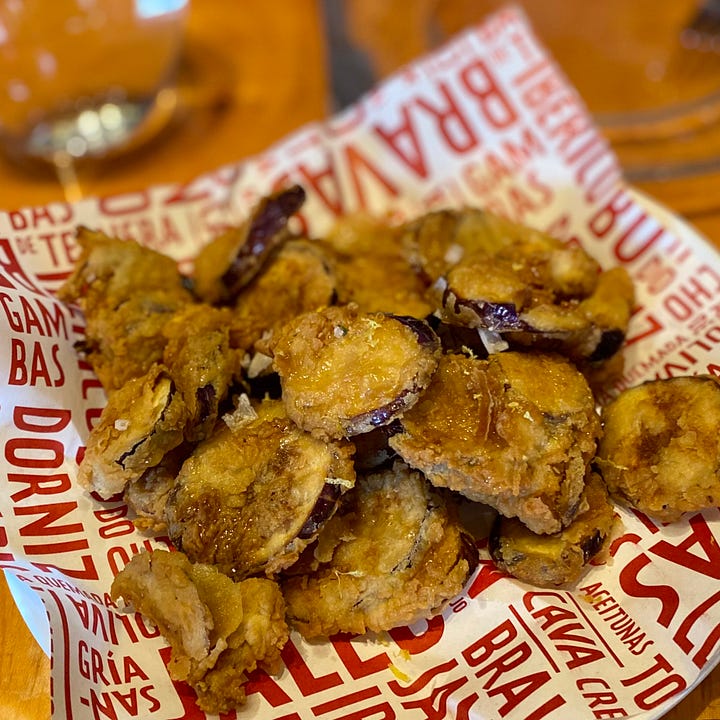
At Jaleo, after all the tapas plates, does one need dessert?
Does one ever need dessert?
On my first visit, I had the flan. In Spain, if you get the menu del dia: the set-price, three-course lunch that’s great value but not always great food – dessert is often flan. It’s Spanish creme caramel, but somehow bigger, less light and less tasty than its French cousin.
Spanish flan is an egg-based, milky pudding. In my opinion, it’s as close as Spain gets to English school dinners. And it’s ubiquitous. I find that odd. With all the fruit and sherry and wine and chocolate – the nougat and marzipan and delicious butter cookies – it’s always seemed strange to me that flan is Madrid’s number one dessert.
Until I tried Jose Andres’s flan, that is.
Oh, the subtlety! Oh, the comfort! The silkiness, the creaminess!
I sound like someone getting overexcited at a flamenco dance performance.
I’m taking a breath.
Here are two words: browned sugar. The Jaleo flan has a background flavour of caramel. It tastes so homemade it’s as if you’re in the kitchen next to a bubbling pot of fudge-coloured syrup.
But that’s not the main taste. The main taste is cooked creaminess with fresh vanilla. This is nursery pudding for foodies – and the piped vanilla bean cream on the side, which you’d think would be unnecessary – adds a fresh coolness that creates an additional dimension of lightness. It’s wonderful.
On my second visit I had strawberry ice cream with a nut cookie. It was perfect – obviously homemade, packed with fresh berries and creamy richness. The cookie’s crispy, dark nuttiness was what the dessert needed to add crunch and depth of flavour.
I’m sure I could go to Jaleo every week and still be delighted and surprised every time.
The food is that good.
Jose Andres’s ongoing humanitarian work continues to surprise and impress too.

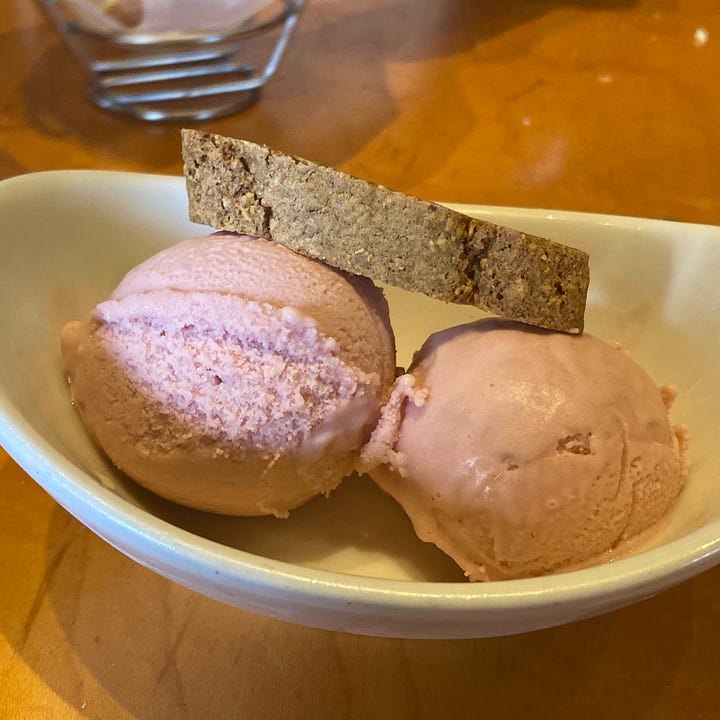

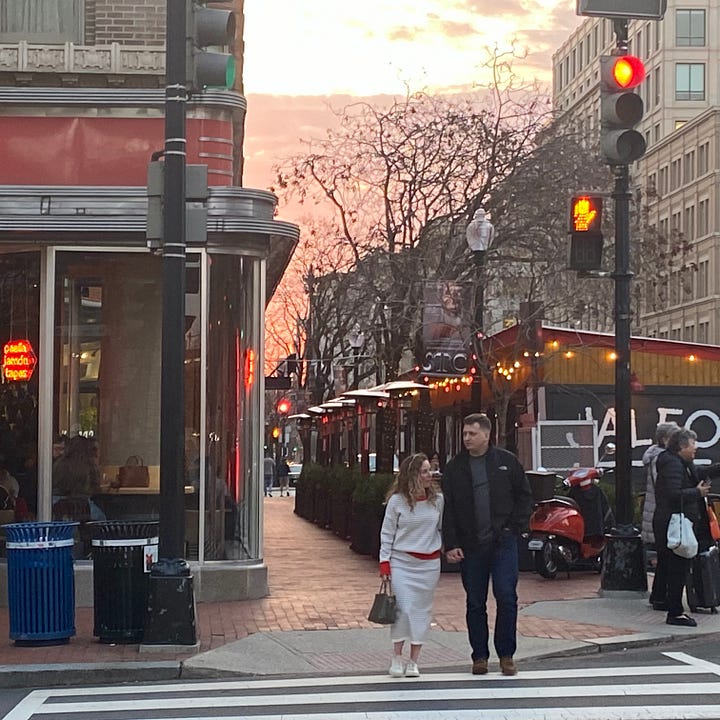

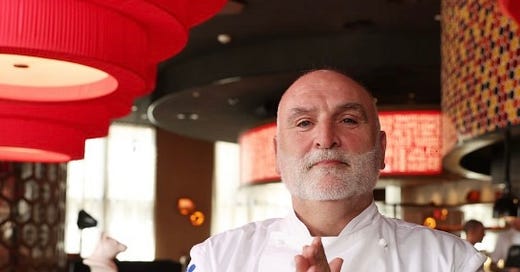



Glad I read this after eating.....
Oh! What a beautiful story 🌹